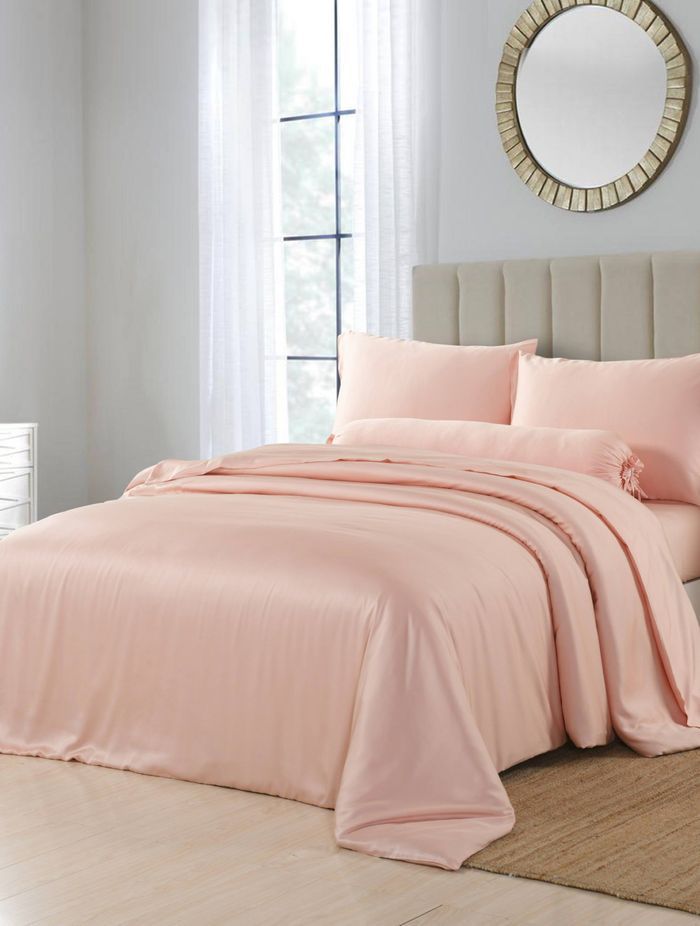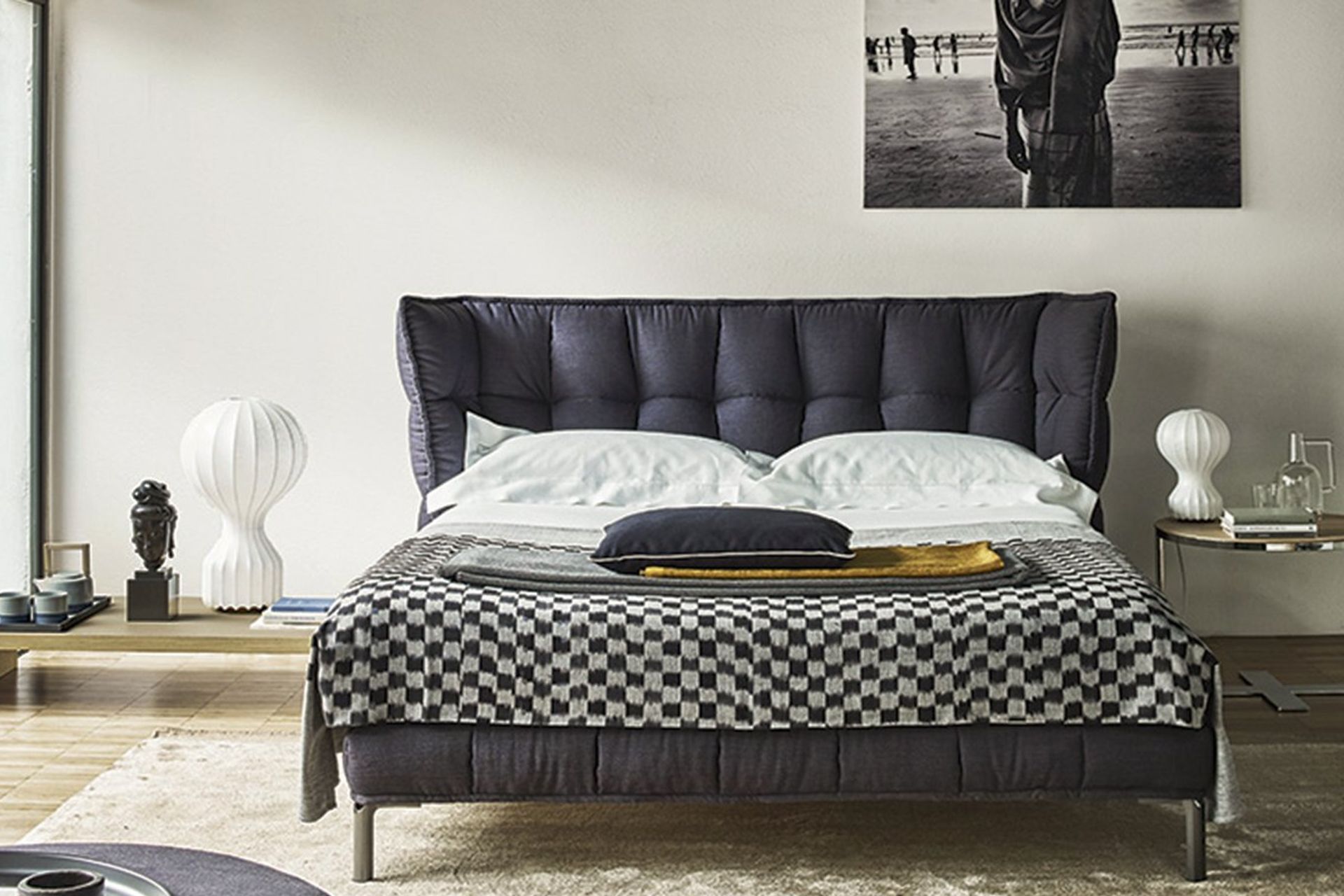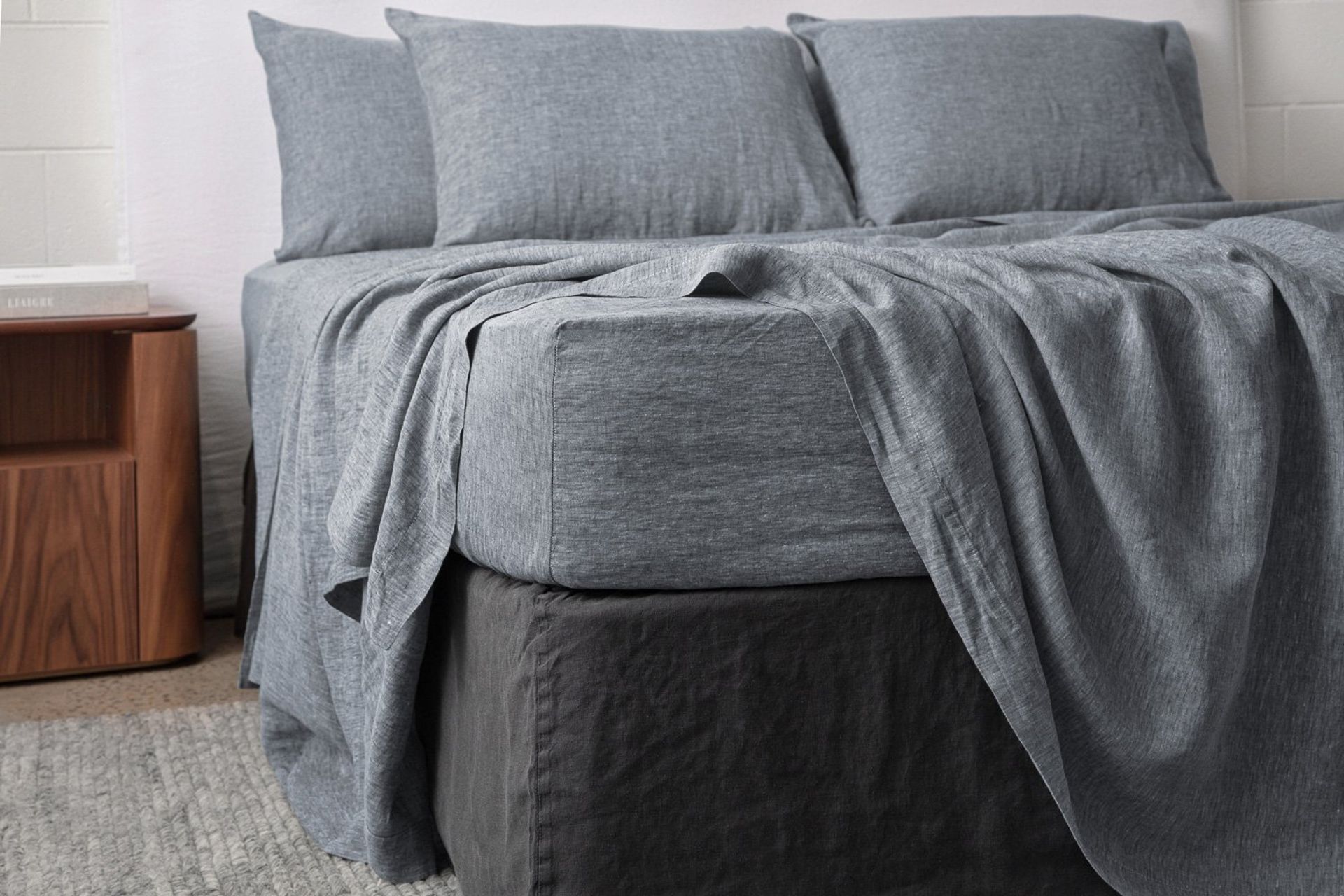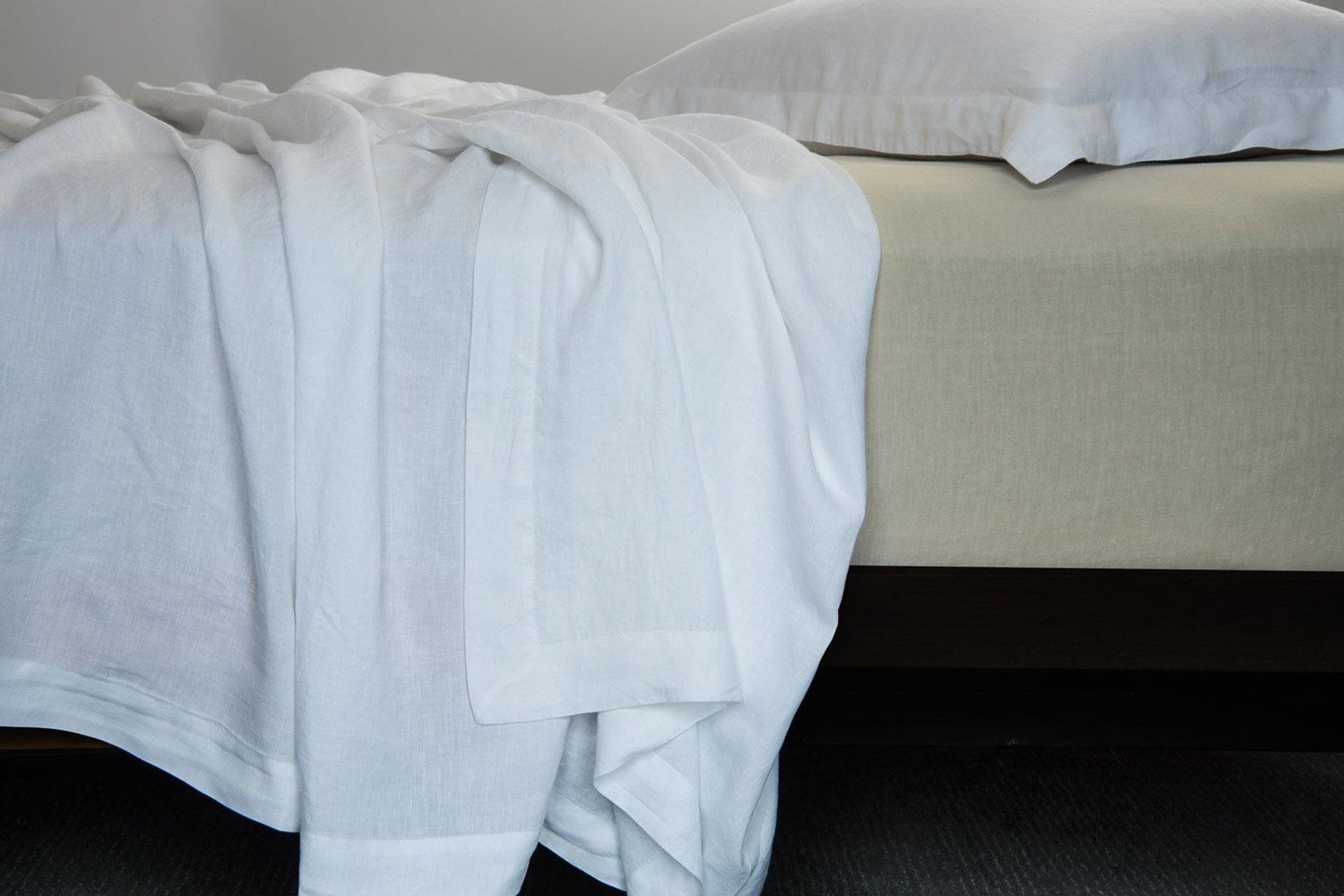Thread count guide: What is the best thread count for bed sheets?
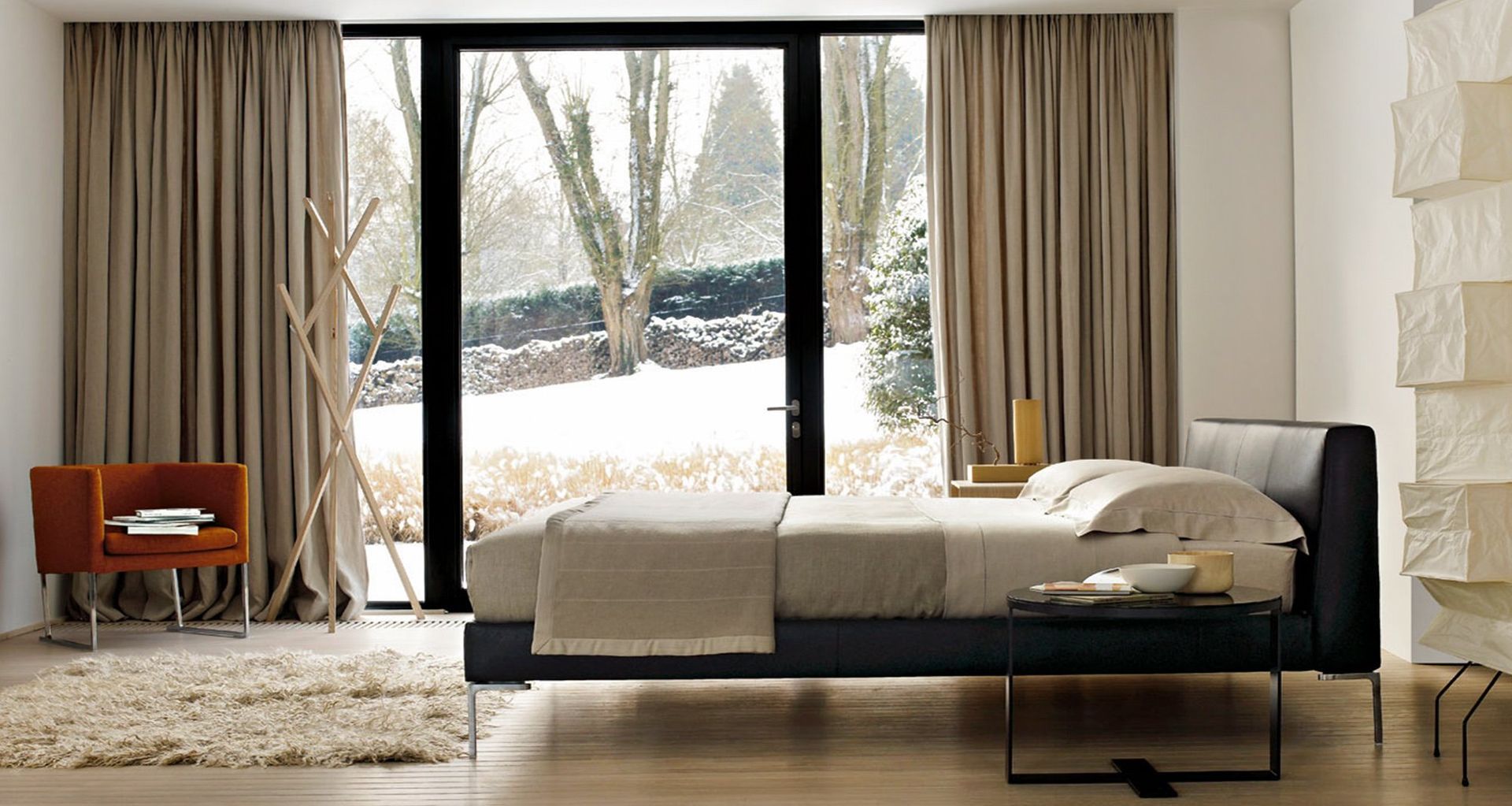
Millions of Australians are reportedly in need of more sleep, with phones often blamed for this deficit. However, an overlooked factor that might be affecting sleep quality is the bed sheets themselves. The right sheets can transform a night's rest, and a key component in this transformation is thread count. In this guide, we'll explore what thread count means, how it can influence your sleep, identify the 'best' thread counts, discuss when thread count is less critical, and suggest the best materials for your bed sheets.
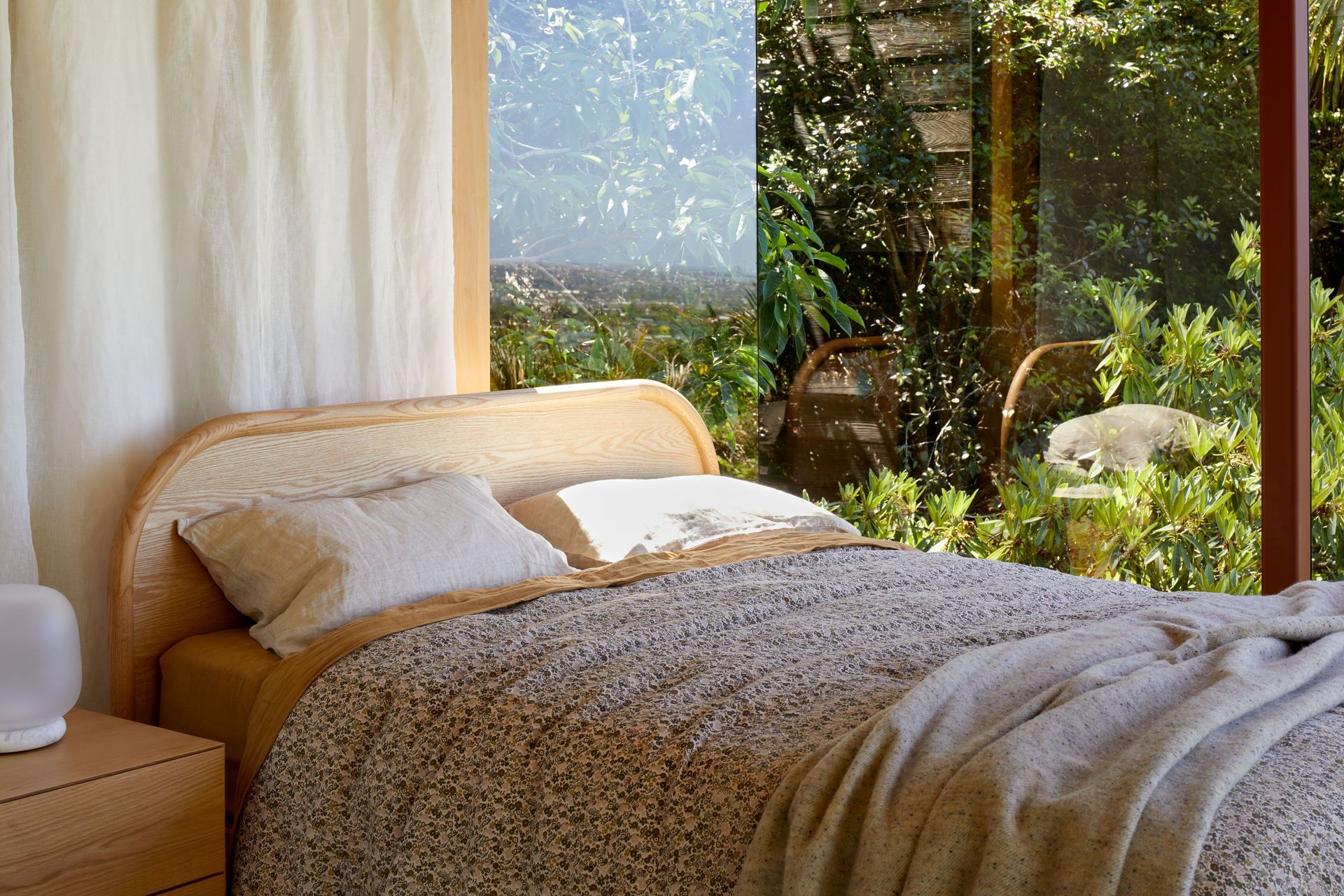
What is thread count for bed sheets?
Thread count refers to the number of horizontal and vertical threads per square inch of fabric in a bed sheet. This measurement is used to gauge the density of the weave in bed linens and other woven fabrics.
What does a higher thread count do in bed sheets?
So what does a higher thread count do in bed sheets? They are certainly discussed a lot by linen brands and manufacturers but what does it actually mean, and does thread count matter?
The answer is 'it depends', and answering the question requires talking a nuanced approach. Typically, a higher thread count indicates a denser weave which , can improve a sheet's softness, overall fabric quality, and longevity. However, it's important to recognise that this metric is not always a clear-cut indicator of excellence. In many cases, high-thread counts are used more as a marketing tool than as a genuine measure of superior fabric strength and quality.
Unfortunately, manufacturers have jumped on this metric, often trying to game the system by falsely inflating the thread count in their products. Some manufacturers weave ultra-thin threads together to create double-ply threads and then double up their thread count. That said, thread count can still be a reasonable guide to sheet quality, as long as you don't let yourself be misled by sky-high thread count numbers.
What is the best thread count for bed sheets?
Determining the 'best thread count' is somewhat subjective, the easiest way to think about thread count is to take into account these general assertions: A good thread count. Here is a guide to thread counts and how they influence quality and softness:
- Under 200 thread-count: These sheets are generally of lower quality. They're not woven as tightly, which can make them feel rougher and less sturdy. They might not last as long or feel as comfortable as higher thread count sheets.
- 200-400 thread-count: Sheets in this category offer a good mix of softness and longevity. They're made with a tighter weave than lower thread count sheets, but they're not as expensive as higher thread count options. They provide a comfortable sleeping experience without breaking the bank.
- 400-800 thread-count: Considered high quality, these sheets are smoother and more durable. The tighter weave makes them softer and more resistant to wear and tear. They're a solid choice for everyday use.
- Above 900 Thread Count: Be wary of sheets with thread counts in this range. Often, these high numbers are more about marketing than actual quality. The increase in thread count doesn't always mean better comfort or longer-lasting sheets, but it usually means a higher price.

As a general rule of thumb, sheets with thread counts between 300 and 500 are usually just as good as higher thread count numbers. Any difference in durability and softness is so small that it might not justify the price tag. Sheets with thread counts exceeding 500-800 are usually quite expensive.
Keep in mind that these thread count standards only really count when it comes to cotton sheets. Linen sheets for example have thicker threads, and therefore lower thread counts. Satin fibres are so thin that cotton thread count standards don't apply because the number of threads woven in satin bed sheets is automatically higher.
Related article: What are the true hallmarks of luxury bedding?
When does thread count really matter?
Thread count really matters in the context of certain types of bed sheets, particularly when evaluating the quality and feel of traditional woven sheets made from natural fibres like cotton. Here are the key instances where thread count is a significant factor:
100% cotton sheets:
For pure cotton sheets, thread count is a good indicator of quality. A higher thread count typically means a softer and more durable sheet. Cotton sheets with thread counts in the 300-500 range often offer the best combination of softness, quality, and breathability.
Single-ply weave:
Thread count is most relevant when it refers to single-ply weaves. In these weaves, each thread is made up of a single strand. High thread counts in single-ply weaves usually indicate a denser, smoother, and more durable fabric.
Luxury bedding:
In luxury bedding products, where the feel and longevity of the sheets are paramount, thread count becomes an important consideration. High thread count sheets (typically above 400) are often associated with greater luxury and comfort.
Balancing Breathability and Softness
When seeking a balance between breathability and softness, thread count can guide your choice. Medium thread count sheets (around 300-400) offer a good balance, providing enough density for softness while remaining breathable.
When does thread count not matter as much?
Thread count isn't always the definitive factor in determining the quality of bed sheets. In some materials and constructions, thread count is less significant:
Multi-ply yarns
Some sheets are made using two or three-ply yarns, where thinner strands are twisted together. This technique increases the thread count, but it doesn't necessarily mean the sheets are of higher quality.
Polyester and blend
These fibres, commonly used in the bedding industry, can be very fine, leading to high thread counts. However, a high thread count in polyester or its blends doesn't guarantee the same quality or feel as natural fibres.
Linen and silk
Linen has thicker fibres, resulting in a naturally lower thread count, while silk is so fine that its quality is often measured by weight. Both materials are valued for their unique properties, distinct from traditional cotton sheets.
Flannel and knit fabrics
These materials, popular for their comfort, especially during cooler seasons, don't follow the usual thread count standards. Flannel is typically categorised by weight, and jersey-knit has a different construction from woven sheets.
What are some of the best materials for bed sheets?
Fibre
Speaking of fibres, this is another important factor to consider when buying bed sheets. Let's take a look at the different types of fibres you'll encounter in bed linen.
Cotton
Cotton is one of the most common fibres traditionally used in bedsheets. Cotton sheets are typically soft, resistant to pilling, and breathable, but are more expensive than synthetic bed sheet options.
There are three main types of cotton used for bed linen. These are:
- Upland cotton
- Egyptian cotton
- Pima cotton
Upland cotton is the most common, but it has shorter fibres, making it less soft and less durable. Pima cotton and Egyptian cotton both fall into the category of extra-long-staple cotton.
Long-staple cotton is more durable and softer to the touch.
Prices can range widely for long-staple cotton, varying from around $50 dollars to a few hundred dollars for a sheet set.
Satin
Real satin sheets are quite hard to come by and are on the pricier side. For a real silk sheet set, you can expect to pay around $85.
They can also feel cold to the touch, and slippery.
However, they do offer a very luxurious sensation to those who enjoy a silky feel to their bedsheets. Real satin sheets and pillowcases are also hypoallergenic.
Polyester
Polyester bed linen is one of the cheapest options when it comes to bed sheets. It is also relatively long-lasting, quick-drying, and highly resistant to creasing.
On the downside, polyester bed sheets lack breathability, are prone to pilling, and lack the feeling of softness and luxury.
Microfiber
Like polyester, microfiber bed sheets are also synthetic, however, they resist pilling and are a little softer. They are usually a little more expensive than polyester, but still cheaper than natural fibre options.
Linen
Linen bed sheets are coming back into vogue in a serious way. They are highly breathable and absorbent, making for a cool sleep, and get softer over time.
Is your best night's sleep is a cool one? If so, linen could be the ideal option.
Linen is prone to creasing. However, its softly, rumpled look is part of the organic appeal of linen bedding.
The main drawback to linen is that it commands a high price point. If you opt for high-quality options, you can expect to pay upwards of $270 for duvet cover.
Linen bed sheets typically come in thread counts ranging between 80 and 140. Any higher than this and the linen is likely to feel hard to the touch.

Weaves
If you're out shopping for bed sheets, it won't be long before you encounter the weave conundrum. Some of the most common weaves you'll run into are percale, combed cotton, and sateen weave.
Percale
In percale cotton, the weave and the weft threads form a basic grid pattern. Because it is less dense and tight than other weaves, percale cotton typically feels light and crisp.
Some percale weaves also feature combed cotton. These bed sheets mimic the quality of long-staple cotton options because their threads are combed before weaving to remove shorter strands of cotton.
Sateen
As their name suggests, sateen weave sheets have a subtle luminous sheen. They are usually thicker and denser than percale.
This is because sateen bed sheets utilize a special weave, where the warp yarn is floated over the weft yarn. This results in a tighter weave, higher thread counts, a silkier finish, and enhanced durability.
Sateen bed sheets are immune to pilling and are very long-lasting. They also offer a luxurious feel to the skin.
Incidentally, did you know that humans are the only mammals who deliberately put off sleep? We're not making any guarantees, but a set of sateen sheets might be the secret to breaking bedtime procrastination.
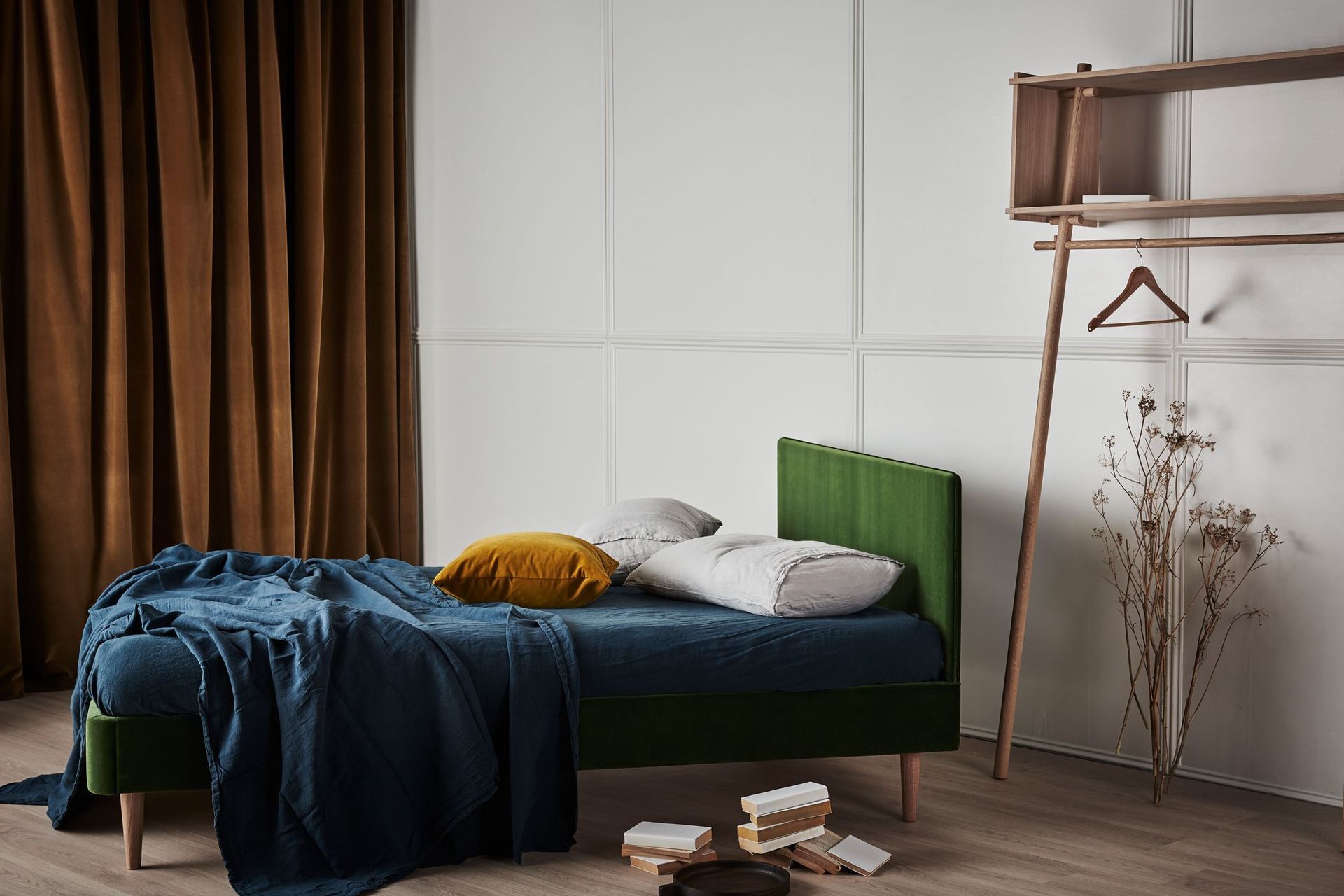
Bed sheet sizes
The final thing to think about when selecting bed sheets is sizes. It seems like every region in the world has its own bedding standards, so it's important to make sure you're buying bed sheets in standard Australian sizes. Australian bed linen sizes are usually smaller than US sizes, but that's where the predictability ends. When compared to New Zealand sizes, it's all over the place.
Single Fitted Sheets: In Australia, these are typically 91 x 190 cm with a 40 cm depth, somewhat smaller than New Zealand's 93 x 205 cm with a 40 cm depth.
King Single Fitted Sheets: Australian king single sizes are 107 x 203 cm with a 40 cm depth.
Double Fitted Sheets: These measure 137 x 190 cm with a 40 cm depth in Australia.
Queen Fitted Sheets: The standard size for a queen in Australia is 152 x 203 cm with a 40 cm depth.
King Fitted Sheets: Australian king sizes are usually 183 x 203 cm with a 40 cm depth.
Super-King Fitted Sheets: The Australian super-king size, measuring 203 x 203 cm with a 50 cm depth, is larger than New Zealand's version, which is 185 x 205 cm with a 40 cm depth.
Think about more than just thread count when you're choosing your sheets
Choosing the right bed sheets goes beyond thread count. Aim for 300-500 for a balance of quality and value, and keep in mind that material and weave also impact your sleep experience. Keep it simple: higher thread count doesn't always mean better. Focus on what feels best for you.
Related article: Flat sheet vs fitted sheet: pros, cons and differences

